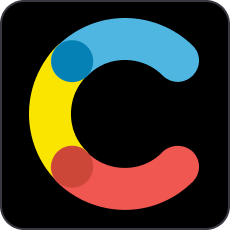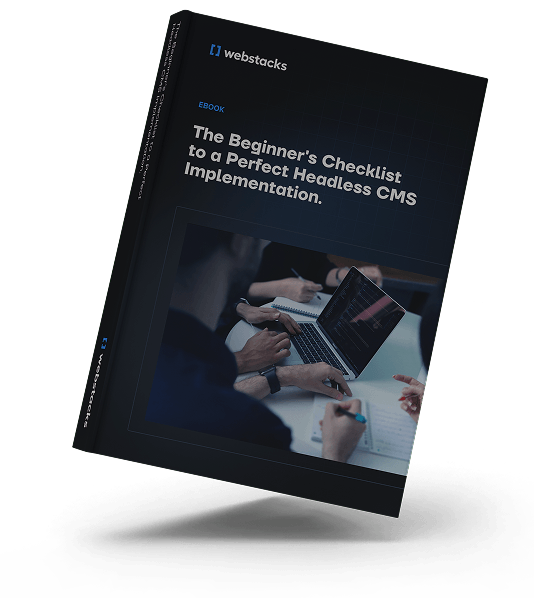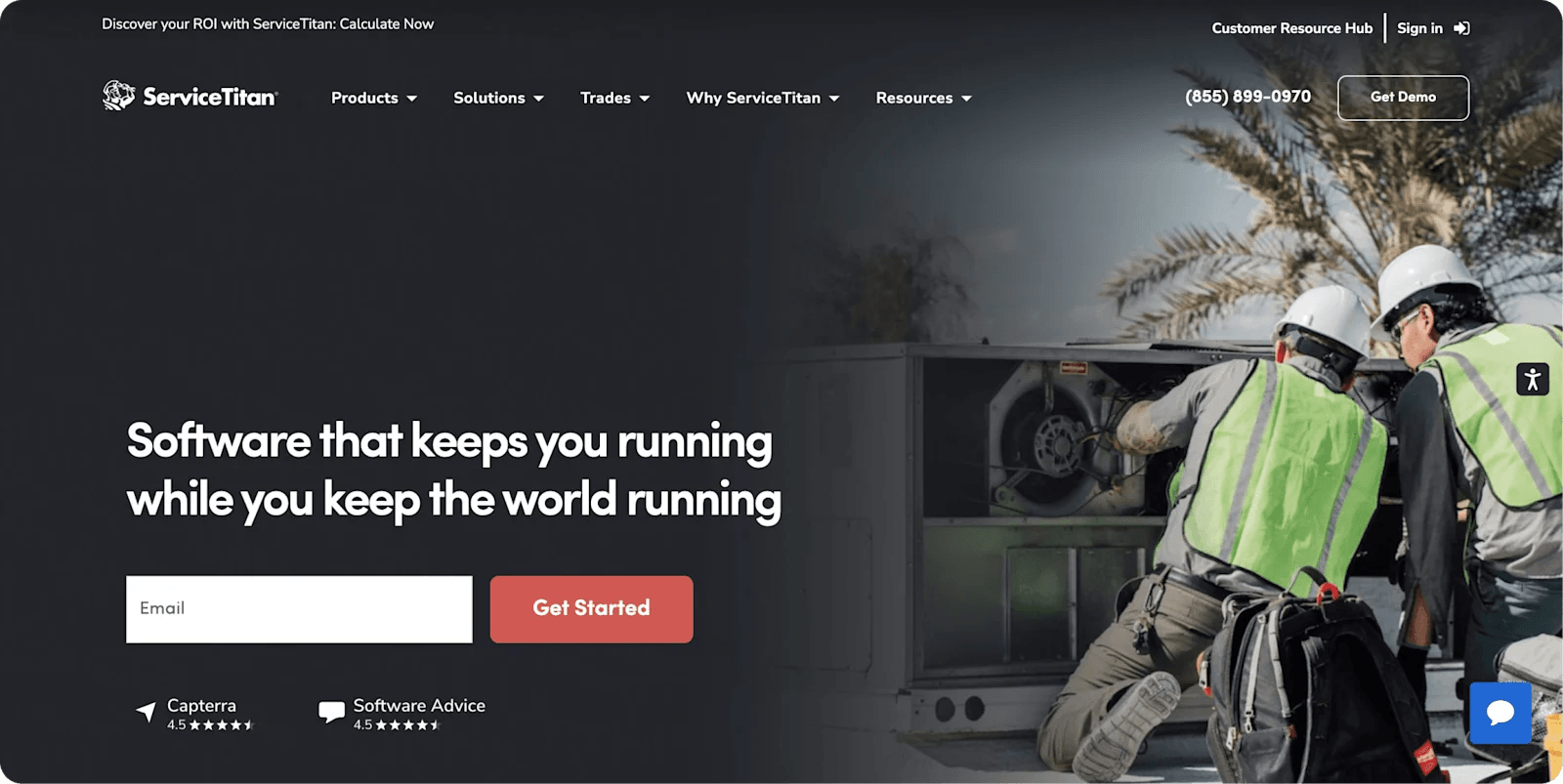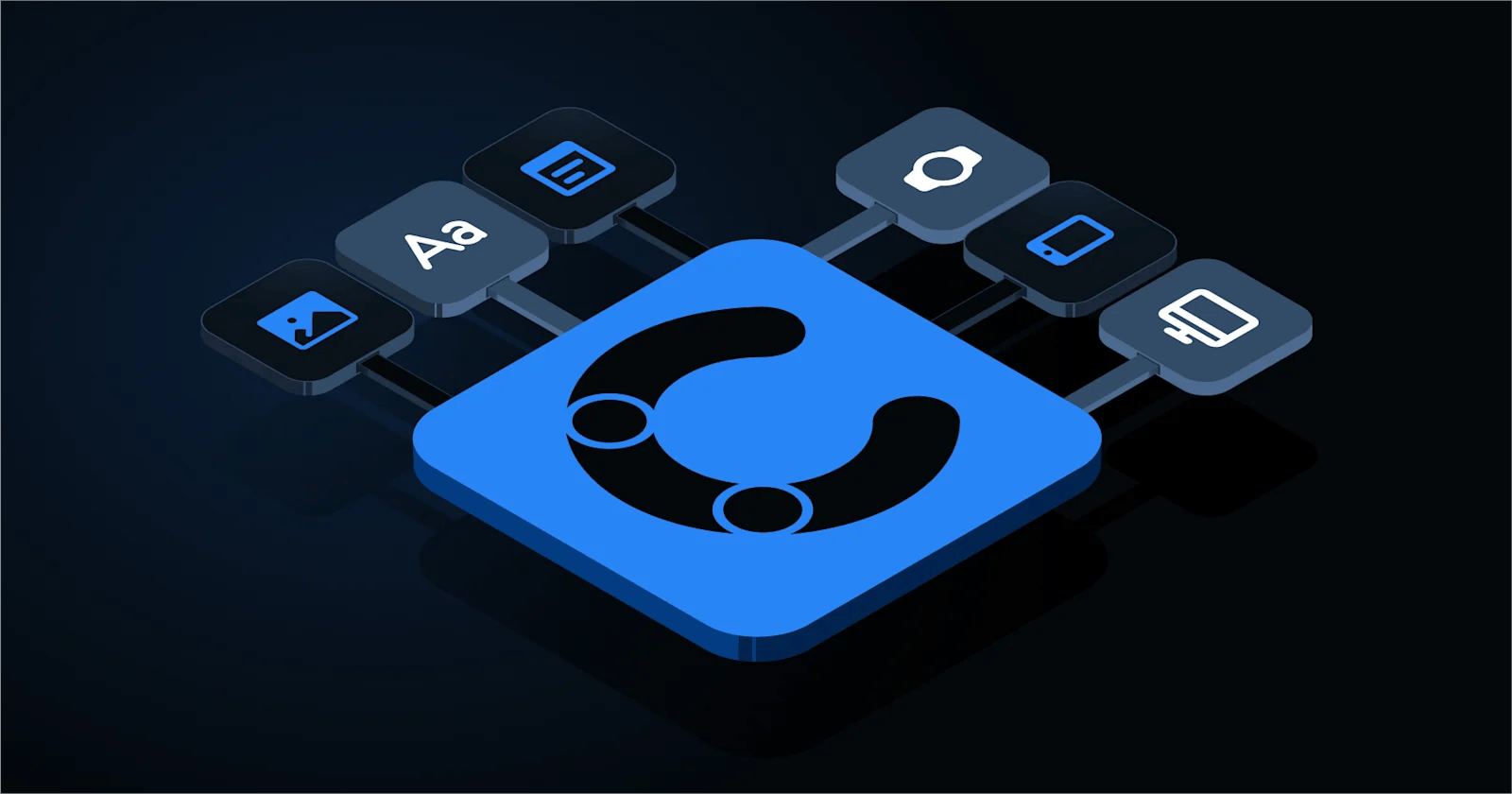With the modernization of websites, building composable systems has never been more important. Businesses are rapidly opting for more modular, scalable architectures that enable their digital content to keep pace with their organization’s growth.
Headless CMS platforms are at the heart of composability, and Contentful stands out as a pioneer in this space. In this guide, we’ll take a deep dive into Contentful, exploring everything you need to know about this cloud-based headless CMS.
As a Contentful Partner Agency with extensive experience designing and developing some of the most innovative websites in B2B tech, Webstacks has seen firsthand how Contentful can transform content management.
Whether you're considering Contentful for your next website migration or simply looking to learn more, we’re here to share our knowledge and opinions on the #1 seller in the world of headless.
This is your comprehensive guide to all things Contentful.

What is Contentful?
Contentful is a powerful, API-first headless CMS built to help businesses deliver content seamlessly across all digital channels. Unlike traditional platforms, it decouples the backend from the frontend, allowing teams to build custom, high-performing websites and experiences.
Contentful’s robust capabilities, such as content modeling, integrations with key tools, and localization, allow businesses to scale their operations while maintaining speed and efficiency. Our team loves Contentful’s cloud-based infrastructure because it is purpose-built for growth, making it the go-to CMS for many of our clients’ website projects.
Key Takeaways
- It’s the most popular headless CMS platform on the market.
- The CMS is API-first, seamlessly integrating with various platforms and devices.
- It has far more features and capabilities than any traditional CMS.
- The platform is your asset library for hosting images, videos, and other content.
- It has all the integrations you need from your existing and future state tech stacks.
- Both the content editing and developer experiences are first-class.
A Quick Headless CMS Refresher
If you are brand new to the world of composable architecture and want to start from square one, you can check out our complete headless CMS primer. Otherwise, here’s a quick breakdown in case you aren’t familiar:
Every website has two key components: the frontend and the backend. The frontend is the user-facing side, where visitors interact with your site. A sleek, well-designed frontend draws in users, provides engaging experiences, and converts visitors into leads.
Behind the scenes, the backend powers functionality, manages content, and ensures the frontend runs smoothly. Think of it as the kitchen of your website–if the backend isn’t well-organized and efficient, the “meals” served on the frontend won’t satisfy your audience, no matter how appealing they lookTraditional content management systems, like WordPress, tightly integrate the frontend and backend, limiting flexibility. Headless CMS platforms, like Contentful, break this dependency.
How Does Contentful Work?

How Does Contentful Work
Enter the headless CMS, a modern solution that decouples these components. Now, businesses can build custom frontends while managing content independently.
At its core, Contentful’s Content Management API enables teams to create, organize, and structure content, while the User Management API controls permissions and workflows. Content is then retrieved through the Delivery API, Preview API, and Image API, ensuring optimized and real-time content delivery across all digital experiences.
Because Contentful integrates seamlessly with third-party systems like PIMs, eCommerce platforms, and cloud storage, it fits effortlessly into modern tech stacks. This API-first approach gives you the flexibility to scale, experiment, and adapt your content strategy without the limitations of a monolithic CMS. Whether you're building a high-performance marketing site, an eCommerce storefront, or a mobile experience, Contentful provides the infrastructure to manage content efficiently and deliver it wherever it's needed.
Key Benefits of Contentful’s CMS
🌐 Omnichannel Marketing
Your content is seamlessly delivered across disparate channels, from websites and mobile apps to even IoT devices. Going headless with a CMS like Contentful is the easiest solution for ensuring brand consistency no matter where your audiences engage with your content.
💻 Scalable Website Operations
Contentful’s technical architecture is built for scalability. Its cloud-based infrastructure allows businesses to handle growing traffic, data, and content demands effortlessly.
With monolithic platforms like WordPress, websites can often get bogged down when traffic spikes or your website’s content grows rapidly. Contentful’s user-friendly interface makes scaling simple – teams can easily add new content types, adjust workflows, or expand operations without slowing down.
⏳️ Website Performance
By decoupling content management from frontend design, Contentful enables faster, more performant websites. Developers can employ modern frontend frameworks like Next.js, Gatsby, or Nuxt.js to optimize loading speeds and user experiences.
🔎 Search Engine Optimization
Similarly, Contentful's composable content platform is designed for best-in-class SEO. Its flexible architecture lets you configure every element to meet your needs. Whether its technical SEO, on-page optimization, schema, or localization, Contentful does it all! (Check out their SEO Guide here).
🔌 Integrations
Contentful integrates with over 100 tools, making it easier to enhance your site’s functionality. From A/B testing and analytics to localization, deployment, and AI-powered tools, you can customize your workflow with apps that align with your business needs.
🔒 Security and Compliance
It may not be as flashy as other features, but Contentful prioritizes safeguarding data and meeting regulatory standards, implementing protocols that set it apart from other CMS platforms.
With ISO 27001-certified data centers and robust safeguards, Contentful provides peace of mind, especially for enterprises and organizations in highly regulated industries. These advanced systems make it a trusted choice for businesses that value reliability and adherence to strict industry requirements in their digital operations.

Who is Contentful For?
Contentful is a versatile content management platform designed for a wide range of businesses.
What You Must Know About Contentful: By Organization Type
First, here are the most common businesses on Contentful:
🏢 Enterprises and Large Organizations
Large companies needing scalability, multi-team collaboration, localization features, and robust security features (Contentful is our top CMS for enterprises).
📈 High-Growth Startups
Fast-growing businesses seeking scalable solutions without the overhead of traditional CMS platforms.
💻 B2B Tech
SaaS, FinTech, AI, Web3, and other technology companies building dynamic, state-of-the-art web experiences.
🛒 E-commerce
Retailers creating personalized, omnichannel shopping experiences while integrating with best-in-class commerce tools to scale and innovate rapidly.
📰 Media and Publishing Companies
Organizations managing high volumes of content and requiring advanced localization and scheduling features.
Beyond those already mentioned, we also have seen Contentful used with companies in other sectors, includin
- ✈️ Travel and Hospitality
- 🏥 Healthcare
- 🏈 Sports and Entertainment
- 🏫 Education
- 🏦 Banking
- 🤝 Non-profit
- 🏛 Government
What You Must Know About Contentful: By Role
Next, let’s discuss the relevant stakeholders when adopting and utilizing Contentful.
💼 Contentful for VPs and Directors of Marketing
For marketing leaders focused on scaling their organization’s impact, Contentful provides the tools to build a modern, composable tech stack. Its headless architecture integrates seamlessly with CRMs, analytics platforms, personalization tools, and other marketing technologies, enabling a unified view of campaigns and performance.
🧑💻️ Contentful for Website Managers
Website managers are tasked with maintaining a site that’s both high-performing and easy to update while supporting the needs of multiple stakeholders. Contentful simplifies this role by enabling seamless collaboration between developers, content creators, and marketing teams. Its headless architecture ensures that content updates can be made without disrupting the website’s design or functionality.
✍️ Contentful for Content Editors
Contentful's web app streamlines the content creation process. With intuitive page-building and modular blocks, content editors can create new pages and make changes at will. This is one of the key benefits of moving to Contentful - marketers no longer rely on the development team for every update.
Additionally, features like real-time collaboration, customizable workflows, and a user-friendly interface enhance productivity and ensure content quality.
🛠️ Contentful for Developers
Developers appreciate Contentful's API-first approach, which offers the flexibility to build custom frontends and integrate with various technologies. Its headless architecture supports modern development workflows, enabling the creation of dynamic, responsive applications while reducing backend constraints.
An Overview of Contentful’s UI
Next, we’ll give you an inside look at the Contentful platform. We’ll explore both content modeling and the page-building experience.
Content Modeling

content modeling
Let’s quickly review content modeling 101.
A content model is a framework that defines the structure, relationships, and organization of content within a CMS. It identifies the types of content you need (like blog posts, case studies, or product pages), the components that make up each type (like title, body text, or image), and how they relate to one another. By creating a consistent and well-thought-out content model, teams can ensure their content (and CMS) is organized, reusable, and scalable.
Contentful content models are fundamental to how content is created, stored, and delivered. Instead of working with predefined templates (common in traditional CMSs), Contentful allows you to design custom content models tailored to your specific needs.
Here’s an example of how a blog content model is structured in Contentful.

content model screenshot
1. Content Model
In the context of a blog in Contentful, the content model defines:
- The Structure: Each type of content (e.g., "Blog Post" or "Author") is built as a separate content type, ensuring data is well-organized.
- The Relationships: Content types are linked together. For instance, a "Blog Post" might reference an "Author" or a "Category."
- The Fields: Every piece of information within each content type, (title, body, or publication date, is defined using fields).
2. Content Types
For a blog content model, the key content types you’d create in Contentful include:
- Blog Post:
Represents individual articles. Fields might include:

author content model screenshot
- Author:
Represents blog contributors. Fields might include: - Category:
Represents high-level blog topics. Fields might include:
3. Fields
Each content type is made up of fields that define the data structure. For example:
- Blog Post:
This content type might include:
- Title: The main headline of the blog post.
- Body: The full content of the post, stored as rich text.
- Author: A reference field to link the post with an "Author" entry, ensuring consistent author data across posts.
- Publication Date: A date field to schedule or sort posts.
4. Relationships
One of the biggest strengths of a Contentful blog content model is the ability to define relationships between content types. For instance:
- A Blog Post links to an Author for displaying bylines or author bios.
- A Category groups multiple Blog Posts, enabling users to browse posts by topic.
These relationships ensure consistency and reusability, allowing the same "Author" or "Category" to appear across multiple posts without duplication.
5. Reusability and Scalability
A well-designed blog content model in Contentful ensures content can be reused across platforms. For example:
- The "Author" content type allows you to manage all author details in one place. Updating an author’s bio will automatically reflect across all blog posts they’re associated with.
- Categories enable you to create dynamic filtering and search functionalities on your blog, enhancing the user experience.
6. API-First Delivery
This is all tied together with Contentful's API-first approach, which enables your blog content to be delivered anywhere, whether it’s a website, a mobile app, or an email newsletter. Your structured data can be pulled and displayed consistently across all platforms.
Why Contentful Content Models Are So Valuable
Consistency: Ensures all content follows the same structure and standards, creating a unified experience across pages, reducing errors,
Scalability: Supports growth by enabling teams to efficiently manage large volumes of content and adapt to changing business needs without starting from scratch.
Speed to Market: Accelerates content creation and delivery by reusing modular components and streamlining workflows, helping teams launch campaigns faster.
Flexibility: Empowers teams to make updates to individual content types or relationships without disrupting the entire system.
Building Pages in Contentful
Contentful provides one of (if not the best) page-building experiences among the headless CMSes. We’ll take a look at another example with a blog page template.
Here, you can see the content types we referenced in content modeling.

blog screenshot 1
Next, we also have our rich text editor, which allows users to write and format content using options like bold, italic, headings, lists, links, and embedding components or media, without needing to work directly with HTML or code.

blog screenshot 2
You’re most likely familiar with something similar in your current CMS.
As you can see above, we embedded a conversion panel component within the text. Contentful makes adding components and assets a breeze. Here’s how
- Contentful’s content model is highly modular, allowing for components to be added as references within other content.
- The component is structured, reusable, and API-deliverable, meaning it can be updated or displayed dynamically wherever it’s embedded. (A component can be updated across all pages by modifying it in a single location within Contentful).
- Developers can define exactly how such components are handled on the front end, allowing for endless customization.
You also have the Contentful Media Library, serving as a centralized hub to upload, manage, and organize media files including images, videos, and documents. There are several ways to filter and sort assets, keeping your library clean.
With built-in versioning, you can update files seamlessly without breaking links, guaranteeing consistency wherever the asset is used. Additionally, the asset manager integrates with Contentful’s API to deliver optimized assets to every device, supporting responsive formats and resolutions that enhance page performance and user experience.
There are a plethora of additional features and capabilities that make Contentful great for creating web pages:
Content Previews: Contentful’s preview capabilities let you see exactly how content will look before it goes live.
Localization & Translation: Built-in multilingual and regionalization tools make it easy to manage content for global audiences.
A/B Testing: Integrate A/B testing platforms like Google Optimize, Optimizely, or VWO with your front end to serve different content versions through Contentful’s API.
Collaboration: Roles, permissions, and editorial workflows allow multiple teams to collaborate efficiently.
Version History: If multiple users work on the same entry at different times, Contentful maintains a version history so changes can be tracked and rolled back if necessary.
How Does Contentful Compare to Traditional CMSes?

Contentful vs traditional cms
So, if you’re currently on WordPress, Webflow, or another monolithic CMS – how does it differ from Contentful?
Traditional CMSes are like an all-in-one package: they store your content, dictate how it looks, and control how it's delivered to your website. That sounds convenient, but it can be limiting—especially for marketers who want to create dynamic, multichannel campaigns.
When you switch to Contentful from a traditional content management system, here’s what you’re getting:
1. Flexibility to Scale Across Channels: Invest in a single source of truth for all your content.
2. Faster Time to Market: Launch campaigns quicker, eliminating bottlenecks from unscalable CMS setups and developers.
3. Less Work, More Consistency: Build once, and reuse content and components across multiple pages, platforms, and campaigns.
4. Future-Proofing Your Content: Keep your tech stack agile, as Contentful’s API-first architecture.
You can read our Contentful head-to-head comparisons with traditional/hybrid CMS options here:

How Does Contentful Compare to Other Headless CMSes?

Contentful vs Headless CMS
Nowadays, most headless CMSes have the same basic capabilities. However, there are certain aspects such as the UI, integrations, and developer experience that make them all unique. Ultimately, what’s best for one organization may not be best for another. Likely, it will come down to personal preference.
When it comes to the headless CMS market, Contentful is the big name everyone knows. According to BuiltWith, Contentful makes 40% of all websites using a headless CMS.
Founded in 2013, it’s been around much longer than most alternatives on the market. It’s not necessarily the cheapest or the most niche, but it delivers on what matters most for modern content teams: flexibility, speed, and integrations.
See how Contentful stacks up against headless CMS competitors here:
- Contentful vs Sanity
- Contentful vs Builder.io
- Contentful vs DatoCMS
- Contentful vs Prismic
- Contentful vs Storyblok
- Contentful vs Hygraph
Who Uses Contentful?
As mentioned before, Contentful is a dynamic and versatile CMS. Even as a web agency that works primarily with B2B tech companies, we’ve seen it benefit a vast audience.
Here are just a handful of our clients who have harnessed the power of contentful and headless CMS.
Calendly

calendly homepage
The leader in online scheduling, Calendly is a long-time user of Contentful. When Calendly first approached Webstacks in 2021, their Contentful instance was fairly new and rigid. Our designers and developers came in and swiftly upgraded the environment, giving their marketing team the full capabilities of what Contentful has to offer.
- Industry: Appointment Scheduling Software
- Company Size: 500+ employees
- Frontend Framework: Next.js
- Hosting: AWS
ServiceTitan

servicetitan homepage
ServiceTitan partnered with Webstacks to overhaul their website by migrating to a modern tech stack featuring Gatsby.js and Contentful. This project improved performance, provided a user-friendly interface for content editors, and enabled the creation of modular web pages without developer dependency. Equipped with a flexible and scalable architecture, ServiceTitan’s marketing team could quickly launch campaigns, maintain consistent branding, and rapidly scale content operations.
- Industry: Field Services Software
- Company Size: 1,000+ employees
- Frontend Framework: Gatsby
- Hosting: Netlify
Learn about our longstanding engagement with ServiceTitan here.
Presbyterian Healthcare Services

phs homepage
The largest hospital network in the state of New Mexico, PHS brought in our team to modernize their digital infrastructure by implementing an enterprise-grade tech stack. The migration to Contentful unified over 1,000 web pages from multiple sub-sites into a flexible, high-performance environment, improving SEO and user experience.
- Industry: Healthcare
- Company Size: 10,000+ employees
- Frontend Framework: Next.js
- Hosting: Vercel
Mutiny

mutiny homepage
Mutiny, a high-growth personalization and A/B testing startup, partnered with Webstacks to execute a front-end migration, transitioning their platform from Ruby on Rails to Next.js. This project included a complete overhaul of their content models within Contentful. The replatforming led to a substantial improvement in website performance and streamlined the process of editing pages for their marketing team.
Check out how Mutiny maintains high velocity for its website initiatives by working with Webstacks.
Contentful Pricing
Now, let’s get into the costs.
Contentful offers a range of pricing plans to accommodate various business needs, from small teams to large enterprises.
Here's a high-level overview:
- Free Plan: Ideal for learning and exploring the platform, this plan is available at no cost and includes 10 users, 2 roles, 2 locales, 100K API calls per month, and 50 GB of CDN bandwidth per month.
- Lite Plan: Priced at $300 per month, it suits small teams managing digital content, offering 20 users, 3 roles, 3 locales, 1 million API calls per month, and 100 GB of CDN bandwidth per month.
- Premium Plan: Designed for large-scale digital experiences, this plan offers custom pricing and includes unlimited users, roles, locales, API calls, and CDN bandwidth, along with advanced security features and dedicated support.
From our experience with hundreds of B2B SaaS organizations, annual CMS costs can vary significantly based on specific requirements. We’ve seen Contentful's pricing range from $5,000 to $70,000 per year, depending on the size of the organization, website complexities, number of users, and required functionality.
Here are key factors that will ultimately influence your grand total:
- Seats: The number of employees accessing your CMS
- Roles and Permissions: The complexity of your organization and role management
- Locales: Supporting multiple languages or regions
- API Calls: Higher API usage
- CDN Bandwidth: Greater bandwidth needs
- Additional Features: Advanced functionalities like enhanced security, integrations, and dedicated support
It's important to note that implementing a headless CMS like Contentful may involve additional expenses, such as integration with other services, development resources, and potential migration costs from legacy systems. These factors should be considered when evaluating the total investment required for adopting Contentful.
Pricing for CMS platforms is always complex due to the amount of unique variables in each company and website. For the most accurate and personalized pricing information, we recommend contacting Contentful's sales team.
Should You Migrate to Contentful?
Deciding to migrate your website to Contentful—or any headless CMS—is a big decision with far-reaching implications. A CMS is at the core of your marketing efforts, directly impacting your team's ability to create, manage, and distribute content effectively.
While Contentful isn’t the cheapest option, its flexibility and modern capabilities can transform your digital operations. Headless architecture might seem intimidating at first, but it’s quickly becoming the standard for modern websites, offering the scalability and adaptability required to stay competitive in today’s digital landscape. Choosing the right CMS is no easy task, but if your organization is aiming for rapid growth and innovative capabilities, Contentful might be the game-changer you need.
Top 5 Signals You Need a New CMS
If you’re unsure whether it’s time to make the leap, here are some clear signs your current CMS may no longer meet your needs:
⚠️ Your Organization Is Experiencing Rapid Growth
Scaling content operations has become critical and if your current CMS can’t keep up with your marketing goals or team’s demands, it might be time to upgrade.
⚠️ Content Management Has Become a Pain
If managing and publishing content feels like a bottleneck, you might want to start exploring more efficient solutions.
⚠️ Your Website Performance Is Suffering
A slow, clunky website caused by outdated tech can hurt user experience and SEO rankings.
⚠️ You Want Advanced Marketing Capabilities
Modern features like personalization, localization, and A/B testing are essential to delivering tailored user experiences. On monolithic CMSes, these might be a pain to implement and report on.
⚠️ You’re Planning a Major Website Overhaul
Redesigning your website is the perfect opportunity to adopt a modern CMS that can support your future growth. If you’re considering a redesign, identify if your CMS is also not ideal.
Be sure to check out our Headless Implementation Checklist, which covers everything your team must know before embarking on a headless migration project.
How to Quickly Set Up Your Contentful Instance
If you want to try out Contentful for yourself, getting started is really simple.
Start by visiting Contentful’s Beginner Guide.
This will have everything you need to create an account, set up a Contentful space, start content modeling, and add in content.
Here are a few other resources you can check out to help get familiar with Contentful:
You can also chat with Contnetful’s team directly here.
Our Final Take on Contentful
Contentful is beloved by thousands of organizations for streamlining content management and enabling modern web performance.
It stands out for unparalleled flexibility, scalability, and modern capabilities for organizations looking to future-proof their digital content operations. Its API-first, composable architecture allows businesses to deliver seamless, omnichannel experiences while empowering marketing, development, and content teams to work smarter, not harder.
As a certified Contentful agency partner, Webstacks has helped some of the fastest-growing B2B companies successfully migrate to and optimize their Contentful environments. Our experience spans a wide range of projects, from enterprises to startups, and from massive website overhauls to ongoing CMS development.
If your organization is evaluating CMS platforms, Contentful is a solution worth serious consideration. Whether you’re planning a migration, preparing for a redesign, or simply interested in scaling your marketing operations, Webstacks is here to guide you through the process
Contact us to discuss your upcoming project or ask questions about whether Contentful is the right fit for your business. Together, we can build a clean, composable, and future-ready CMS environment tailored to your goals!





